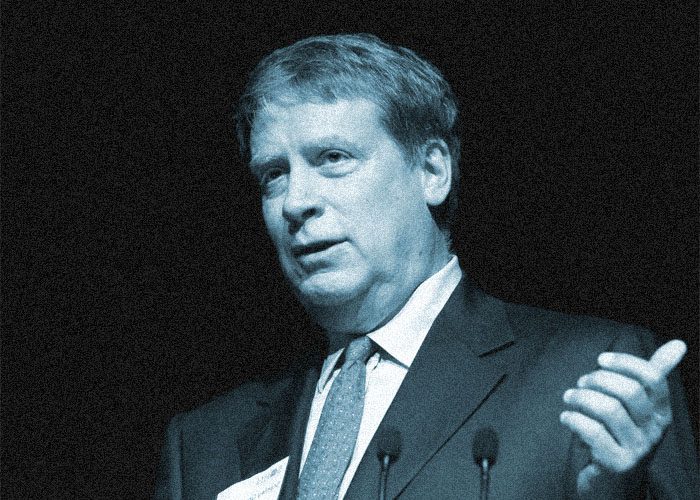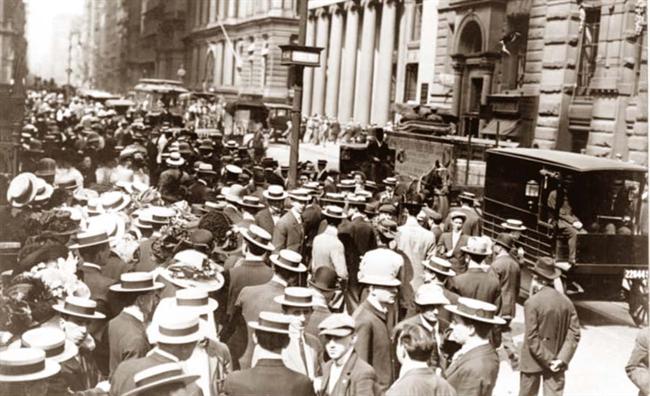“If you want to learn something, read about it.
If you want to understand something, write about it.
If you want to master something, teach it.” Yogi Bhajan
It’s not known whether the likes of George Soros and Julian Robertson were aware of Yogi Bhajan’s wise words, but they certainly seemed to have shared his enthusiasm for passing on their expertise to a younger generation. In the case of Robertson, it was his famous ‘Tiger Cubs’ that went on to storm the markets in the 2000s, and with Soros, it was Stanley Druckenmiller that went on to have the greatest success of any of his proteges.
Born in 1953 in Pittsburgh, Pennsylvania, he moved around a lot during his youth, ending up in Richmond, Virginia where he attained a bachelor’s degree in English and Economics from Bowdoin College, where he also opened a hot dog stand with Lawrence B. Lindsey, later an economic advisor to George W. Bush. He then went onto study for a Ph.D in economics at the University of Michigan, but dropped out mid-way through to work as an oil analyst at Pittsburgh National Bank in 1977.
After just one year, he rose to be the head of the bank’s equity research group, and just four years later, he struck out on his own by founding his own company, Duquesne Capital Management. He started working as a consultant to Dreyfus in 1985, and was named head of the Dreyfus Fund the following year, although he remained in charge of his own fund.
Word was spreading fast about Druckenmiller’s talent for trade-spotting, and in 1988 he was head-hunted by one of the giants of the hedge fund world – no less than George Soros – to replace Victor Niederhoffer at Quantum Fund. Together, they were responsible for what has become the most famous trade of all time, with Soros going down in legend as the man who “broke the Bank of England” by shorting the pound in 1992, making over $1 billion in profits, and forcing the UK to leave the European Exchange Rate Mechanism.
However, it was in fact Druckenmiller who originally identified the trade opportunity. He calculated that the Bank of England did not have enough foreign currency reserves to buy enough sterling to prop up the currency, which meant that they would not be able to raise interest rates without running into trouble.
Throughout the remainder of the 1990s, Druckenmiller was the toast of the investment world, with one of the best trading records in the industry. His top-down macro trading style was largely similar to that of Soros, in that he would hold a group of stocks long, a group of stocks short, and use leverage to trade futures and currency. It was to prove a successful strategy, and at his peak he had over $12 billion in assets under management in his own hedge fund alone.
However, the honeymoon ended in 2000, when he left Soros after taking a massive hit on technology stocks when the tech bubble burst. Since then, he has continued to run his own hedge fund, although like many of his contemporaries, he closed the fund to outside investors and converted it into a family office in the wake of the financial crisis and the wave of new regulations, particularly the Dodd-Frank Act.
Speaking to Bloomberg in 2010, Druckenmiller announced the closing of his hedge fund “telling investors he’d been worn down by the stress of trying to maintain one of the best trading records in the industry while managing an ‘enormous amount of capital.” Having made an average annualised return of 30% without having any loss making years for the life of the fund, in 2010 Duquesne funds were down by about 5% in August, prompting his retirement. Even though he made up these losses and closed with a small gain by the end of the year, mainly due to small bets that the Fed would announce further quantitative easing, there was to be no return to investing other people’s money for Druckenmiller.
However, unlike many top traders who have closed down their funds, Druckenmiller still publicly files his holdings, which as a private investor he is not obliged to do. This provides an invaluable resource for private investors, and is in keeping with his philosophy of helping to educate the next generation of traders, a trait he has inherited from his mentor, George Soros.
Although he, like many famous investors, prefers to shun the limelight for the most part, when he has granted interviews they have been of an educational nature. Here, we have collected some of the most useful quotes from his interviews for Jack D. Schwager’s New Market Wizards book and a more recent interview with Bloomberg TV.
On when to take more risks: “Many managers will book their profits when they’re up a lot early in the year. It’s my philosophy, which has been reinforced by Mr. Soros, that when you earn the right to be aggressive, you should be aggressive.”
On analyzing companies: “I particularly remember the time I gave (the research director) my paper on the banking industry. I felt very proud of my work. However, he read through it and said, ‘This is useless. What makes the stock go up and down?’ That comment acted as a spur. Thereafter, I focused my analysis on seeking to identify the factors that were strongly correlated to a stock’s price movement as opposed to looking at all the fundamentals. Frankly, even today, many analysts still don’t know what makes their particular stocks go up and down.”
On achieving a superior track record: “George Soros has a philosophy that I have also adopted: The way to build long-term returns is through preservation of capital and home runs … The way to attain truly superior long-term returns is to grind it out until you’re up 30 or 40 percent, and then if you have the convictions, go for a 100 percent year.”
On what he’s learned from George Soros: “Perhaps the most significant is that it’s not whether you’re right or wrong that’s important, but how much money you make when you’re right and how much you lose when you’re wrong … Soros has taught me that when you have tremendous conviction on a trade, you have to go for the jugular. It takes courage to be a pig … As far as Soros is concerned, when you’re right on something, you can’t own enough.”
On using both valuation and technicals: “I never use valuation to time the market. I use liquidity considerations and technical analysis for timing. Valuation only tells me how far the market can go once a catalyst enters the picture to change the market direction. The catalyst is liquidity, and hopefully my technical analysis will pick it up.”
On hedge funds: “Oh, I don’t know. I think the hedge fund’s short-term thinking is just a manifestation of our entire society. Whether it’s the fed or whether it’s– the administration or whether it’s Congress, no one bothers to think about the long term anymore. And the hedge funds are just one more manifestation of that.”
On where to invest now: “That’s hard for me to answer. Because I have the luxury of a lot of experience in sitting in front of a screen. And I can go into currency markets where it’s at a relative price. So it’s the one area where prices aren’t subsidized. And I’m arrogant enough to think I can time these things. But I don’t really know how to answer that question for public invest– but let me just say that this idea that you’ve got go plowing into risk because rates are zero, that they will rue the day one day. The music will stop. And I would probably be invested right now thinking I’m smart enough to know that we’re quite away from the music stopping. I don’t think Bernanke is about to end these policies for a while. But let’s just know what we’re dealing with here.”
Learning from mistakes: One of the biggest lessons Druckenmiller has learned is that you can be right about a trade and still make a big loss if you use too much leverage.
On equities versus bonds: “One of the things that is kinda one of my pet peeves is hearing all these people on TV say, ‘Well, you gotta go into equities ’cause they’re so cheap relative to bonds and there’s no other game in town.’ They are cheap relative to bonds. But everything is cheap relative to bonds…So just because equities are cheap relative to bonds doesn’t mean their price isn’t subsidized. I’m not making a forecast here because the subsidization could go on for a long time. But real estate, gold, equities, they’re all priced off of ZIRP, zero interest rates, and they’re all subsidized.
I am a writer based in London, specialising in finance, trading, investment, and forex. Aside from the articles and content I write for IntelligentHQ, I also write for euroinvestor.com, and I have also written educational trading and investment guides for various websites including tradingquarter.com. Before specialising in finance, I worked as a writer for various digital marketing firms, specialising in online SEO-friendly content. I grew up in Aberdeen, Scotland, and I have an MA in English Literature from the University of Glasgow and I am a lead musician in a band. You can find me on twitter @pmilne100.





































